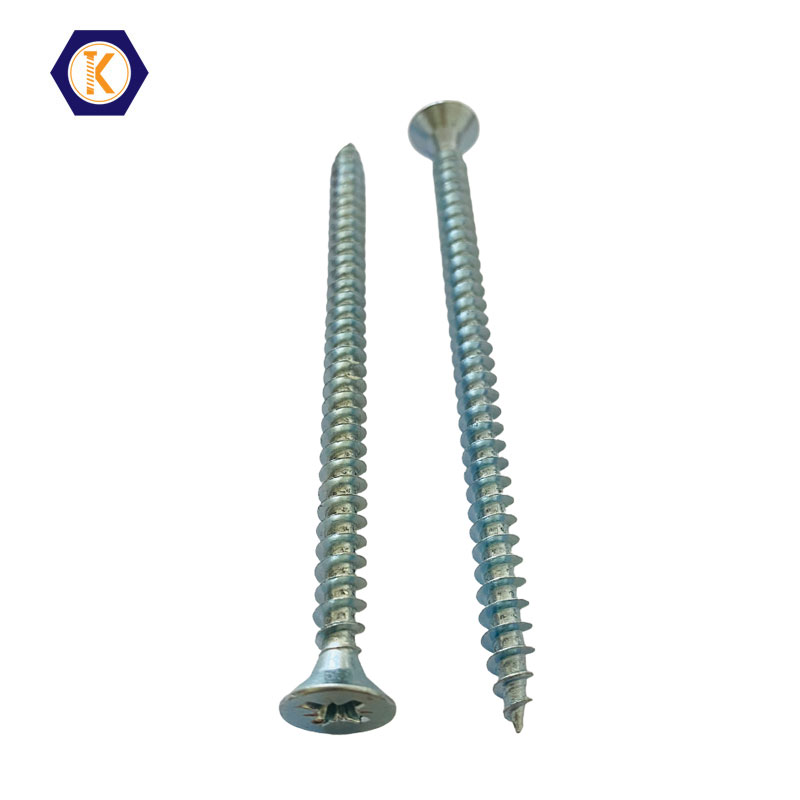Unveiling the Importance of Torque: Driving Chipboard Screws with Torx Flat Heads and Zinc Plating
2024-03-11
Chipboard screws with Torx flat heads and zinc plating are prized for their reliability, versatility, and ease of use in woodworking, construction, and DIY projects. One critical aspect of using these screws effectively is understanding the torque requirements for driving them into the material. Let's explore the significance of torque and how it influences the installation of chipboard screws with Torx flat heads and zinc plating.
1. Understanding Torque: Torque refers to the rotational force applied to a fastener, such as a screw, to drive it into the material. Proper torque ensures that the screw is securely seated and provides sufficient clamping force to hold the materials together. Insufficient torque may result in loose or insecure fastening, while excessive torque can lead to overtightening, stripping the threads, or damaging the material.
2. Torque Requirements: While there are no universally standardized torque requirements for driving chipboard screws with Torx flat heads and zinc plating, there are general guidelines and best practices to follow. The optimal torque depends on factors such as the size and length of the screws, the type of material being fastened, and the specific application.
3. Manufacturer Recommendations: Many screw manufacturers provide torque recommendations or guidelines for their products based on extensive testing and engineering analysis. These recommendations typically specify the appropriate torque range for driving the screws into various materials and applications. Consulting the manufacturer's specifications ensures that you use the correct torque settings for optimal performance and reliability.
4. Power Tool Settings: When using power tools such as cordless drills or impact drivers to drive chipboard screws, it's essential to adjust the torque settings to match the recommended torque range for the screws. Most power tools feature adjustable torque settings that allow you to control the amount of rotational force applied during installation. Setting the torque too high may risk overtightening, while setting it too low may result in insufficient clamping force.
5. Test Fitting: Before driving chipboard screws into the material, it's advisable to conduct a test fit to assess the torque requirements and ensure proper alignment. This involves temporarily positioning the screws in the desired locations and testing the torque settings to determine the optimal level for driving the screws without damaging the material or compromising the integrity of the joint.
6. Consistency and Control: Consistency and control are key when applying torque to chipboard screws. Using a torque-limiting screwdriver or power tool helps ensure consistent and uniform torque application, reducing the risk of over- or undertightening. This is particularly important in applications where multiple screws are being driven into the material, as uniform torque helps maintain structural integrity and alignment.
7. Safety Considerations: Proper torque application not only ensures the integrity of the fastened joint but also promotes safety in woodworking and construction projects. Over- or undertightened screws may compromise the structural stability of the assembly or pose a risk of injury due to loose or protruding fasteners. By adhering to recommended torque guidelines, you can minimize the risk of accidents and ensure a secure and reliable installation.
In conclusion, understanding the torque requirements for driving chipboard screws with Torx flat heads and zinc plating is essential for achieving optimal performance, reliability, and safety in woodworking and construction projects. By following manufacturer recommendations, adjusting power tool settings, conducting test fits, and prioritizing consistency and control, you can ensure that the screws are securely seated without compromising the integrity of the material or joint. Torque may be a seemingly small detail, but it plays a crucial role in the success and longevity of fastening applications, making it a fundamental consideration for any project involving chipboard screws.



